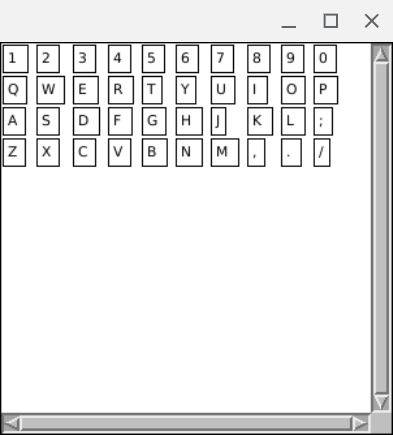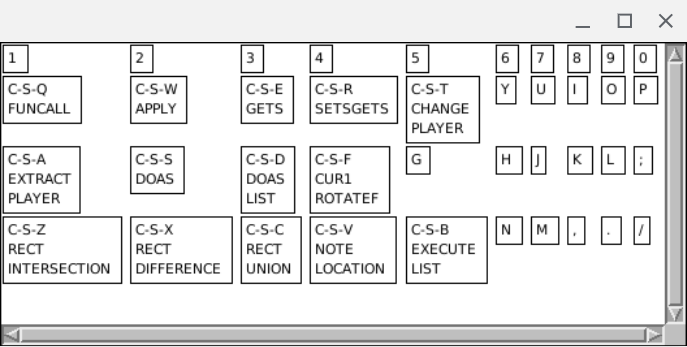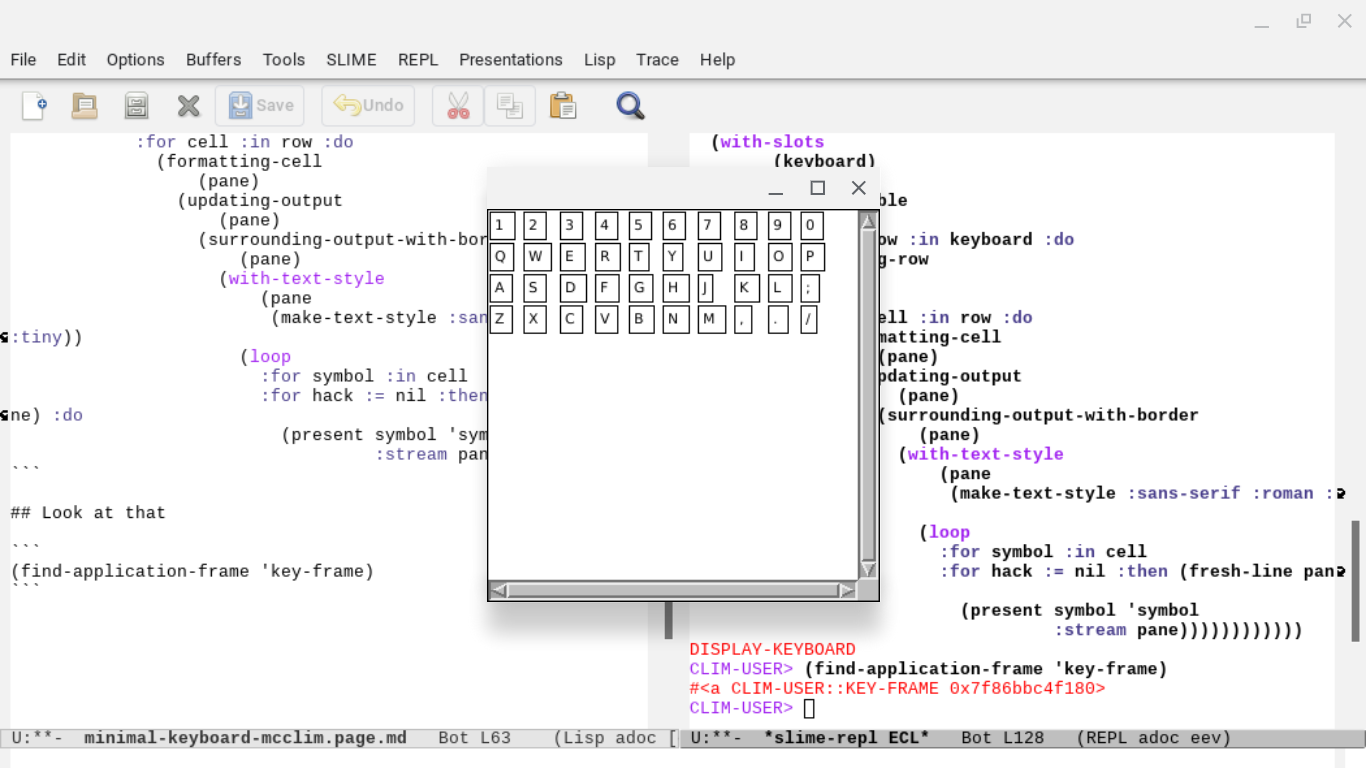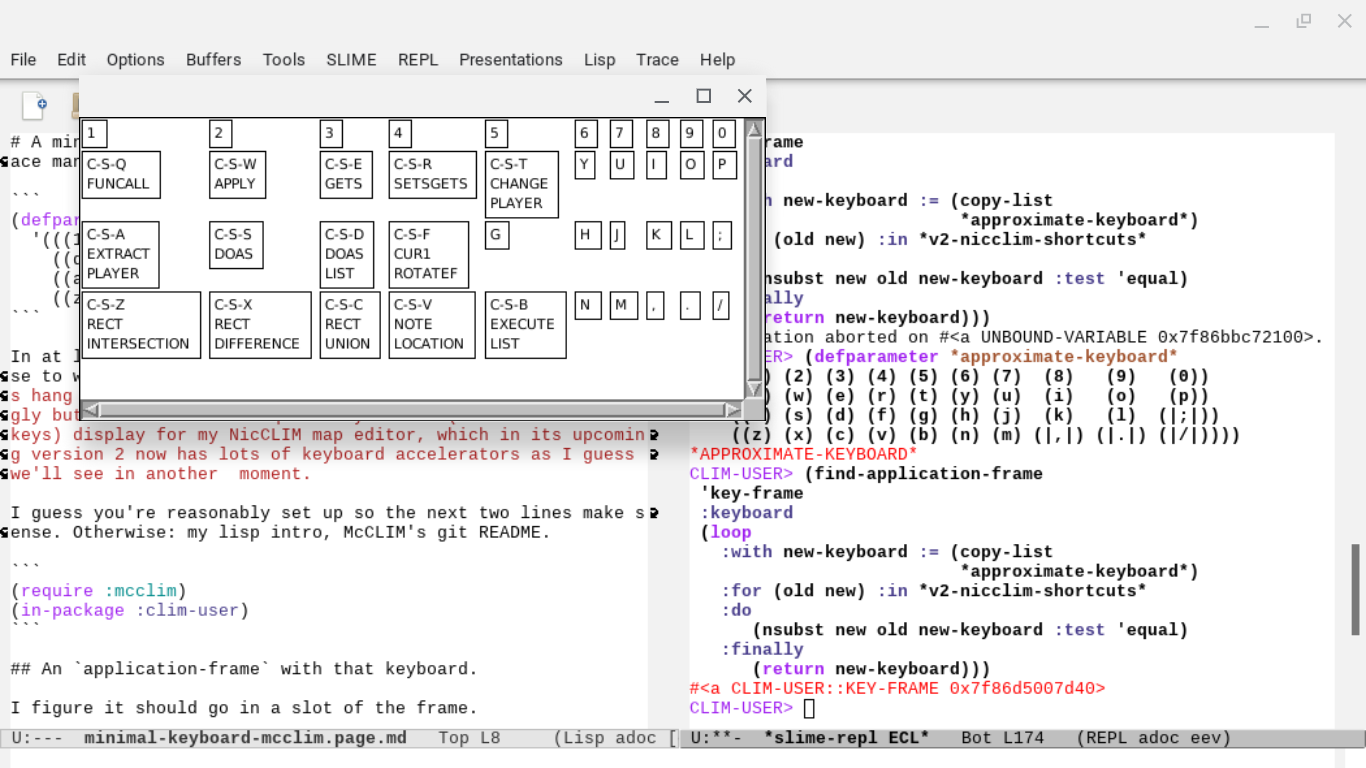A little painting program in 12 lines of Sunflower BASIC.
https://git.sr.ht/~rabbits/tiny-basic/tree/main/item/examples/paint.bas

It should be a federal crime to release software without accompanying source code. Even if your license doesn't allow redistribution, people have an inherent right to know and review what code runs on their own hardware.
Manifesto for Handcrafted Software
__________________________________
We are uncovering better ways of developing software by writing the damn code ourselves and helping others to write the damn code themselves.
Hey everyone,
I made a simple #GUI dynamically-resizing-for-cells table using #McCLIM #commonLisp Interface Manager while working on my #NicCLIM #gamedev (help menu display). If you didn't know what lisp's nsubst was like, I certainly used that.
tfw forgot link https://screwlisp.small-web.org/lispgames/minimal-keyboard-mcclim/
Might be nice just to see it working like it says on the back of the box #programming #UI
I'm not contending to be a graphic designer, but at some point you need a table of things, right.
#emacs too I guess.




Just a reminder that this exists
I will take the lessons I have learned from these BASIC text editors and reflect it into Lisp...
Interesting. The "big" Teco clone I have for msdos by a Mark H. North and is mostly teco-11 version 27 (with some additions from v 40) (so it's DEC teco) but some of the docs are from Tom Almy and hints that it's written in Turbo Pascal.
I also have a tiny (.com file!) teco written in C by a Y. N. Miles and is also DEC PDP-11 teco, or rather a tiny subset. originally written for his microVAX. This one has source! 😀
doxx is a TUI for viewing .docx files in your terminal.
It renders tables, has search & highlight, clipboard copying, export to Markdown/CSV/JSON, has inline images & colors and more.
Brandon Greenwell (bgreenwell on GitHub) made doxx using @ratatui_rs and is Terminal Tool of the Week! ⭐️
PROJECT RESULTS UPDATE
https://git.sr.ht/~vidak/peoples-permacomputer/tree/master/results/phase-3.md
sample:

# What is the point of this project?
The original purpose of this project was to design and then construct computers that would be able to survive a societal collapse.
After working on the project, it became apparent that the point of the project should not be to imagine a hypothetical future, but to engage practically with the problems of the present.
The entire computing stack of the modern era is large, confusing, and unsafe. People would rather excuse themselves from having to learn about it. Who can blame them?
The first aim of the project is to be exceedingly cost effective: "if the oppressed cannot access some technology, then it is not revolutionary".
The second aim of the project is the promotion of digital literacy. Digital literacy should promote a joyful user experience that is non-exploitative. It should also foster a sense of community--"no-one is an island".
To this end, the scope of the people's permacomputer project was deliberately limited to programs around or just over 100 lines. Definitely not more than 200.
The project therefore decided to investigate BASIC as the paradigmatic human-computer interface for the permacomputer.
For the application towards which it was targeted, the investigation the project has done so far into BASIC has been fruitful, and even quite surprising--the 70s/80s hobby computing scene was far richer and more creative than the project previously assumed: not less than five (5) different text editors in BASIC were unearthed!
the project is currently working on two things:
- the adoption of a cheap pre-existing micro-controller platform to support
- a very simple user environment to promote digital literacy
practically, this has resulted in:
- the adoption of the arduino micro-controller core, which is available on many micro-controller platforms, such as the raspberry pi pico series, the chinese CH32 RISC-V micro-controller series, and the STM32 series. ESP32, ESP8266...
(ie. if you are able to flash something with the arduino core, the people's permacomputer is going to be able to support that hardware)
- the project has been using the arduino mega 2560 (8K RAM), and the raspberry pi pico RP 2040 (full 64K memory space available).
(the raspberry pi pico is probably too good to be true: for the specs you get, the micro-controller unit is very, very cost effective)
- the adoption of a micro-controller based VGA terminal, based on:
https://github.com/dquadros/RPTerm
(the cheapness of the pico micro-controller unit makes it difficult not to use _another one_ in order to 'put a head' on the people's permacomputer, removing the necessity for a serial console connection to another computer)
- the adoption of Stefan's Tiny BASIC as a supported user environment:
https://github.com/slviajero/tinybasic
(this Tiny BASIC is reasonably fully-featured. most keywords work in a way that one would expect from paradigmatic BASIC. with statements like SET you are able to change environment variables that affect the 'flavouring' of the BASIC--ie. Apple I, Microsoft 8K, Dartmouth...)
- the unearthing of many text editors from the mid-70s to mid-80s hobby computing scene, all written in BASIC:
https://git.sr.ht/~vidak/peoples-permacomputer/tree/master/item/basiclang/text-editors/transcribed
(with the recent work done on studying the Stefan's Tiny BASIC MANUAL.md, it should be possible to get many, if not all of these text editors working in some form)
---
the project has also started exploration of the uxn virtual machine platform as a potential target for the BASIC user environment that results from the project:

Compute! magazine.
Issue 35, April 1983.
currently working on a transcription of an Atari BASIC text editor, SCRIPTOR.



 🇨🇦
🇨🇦

